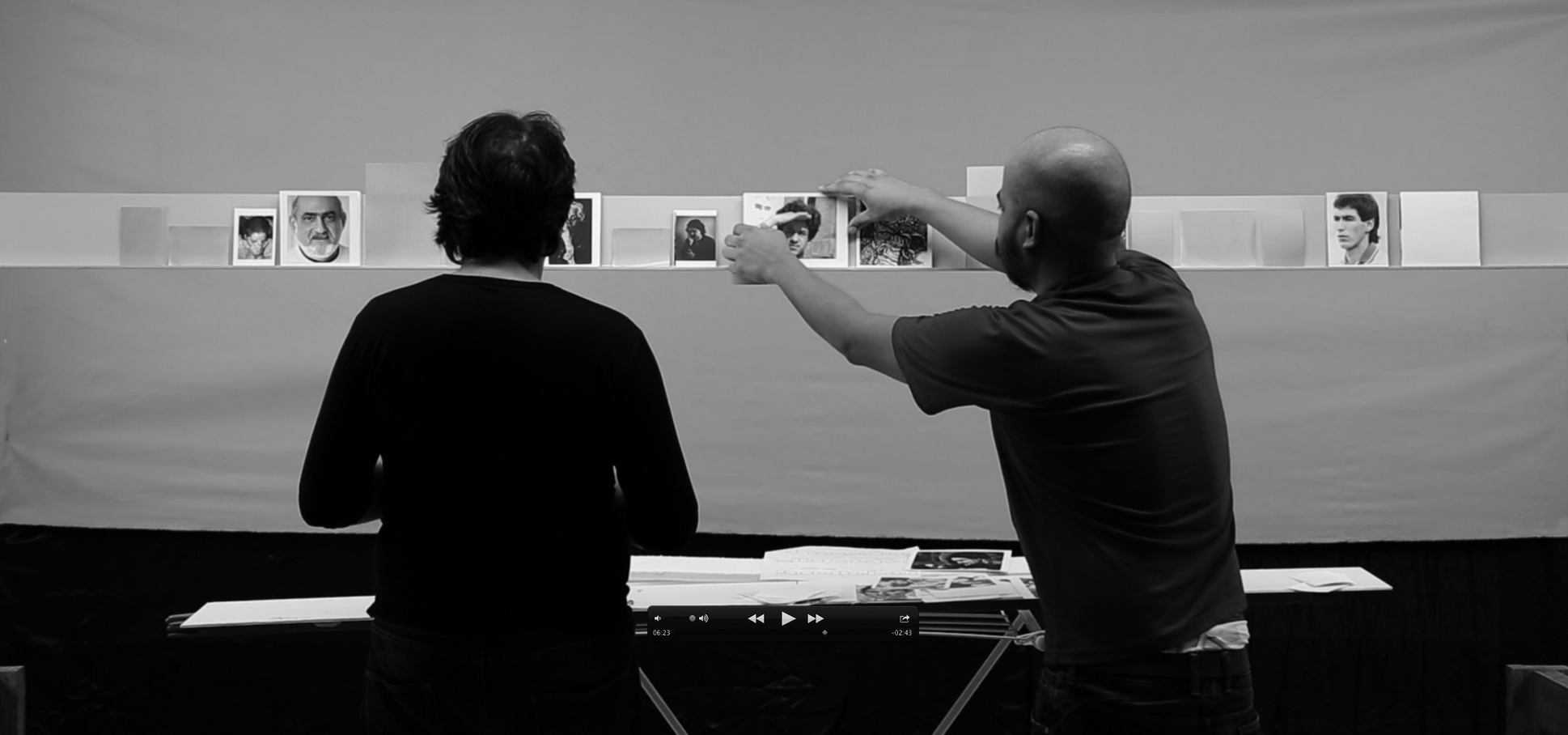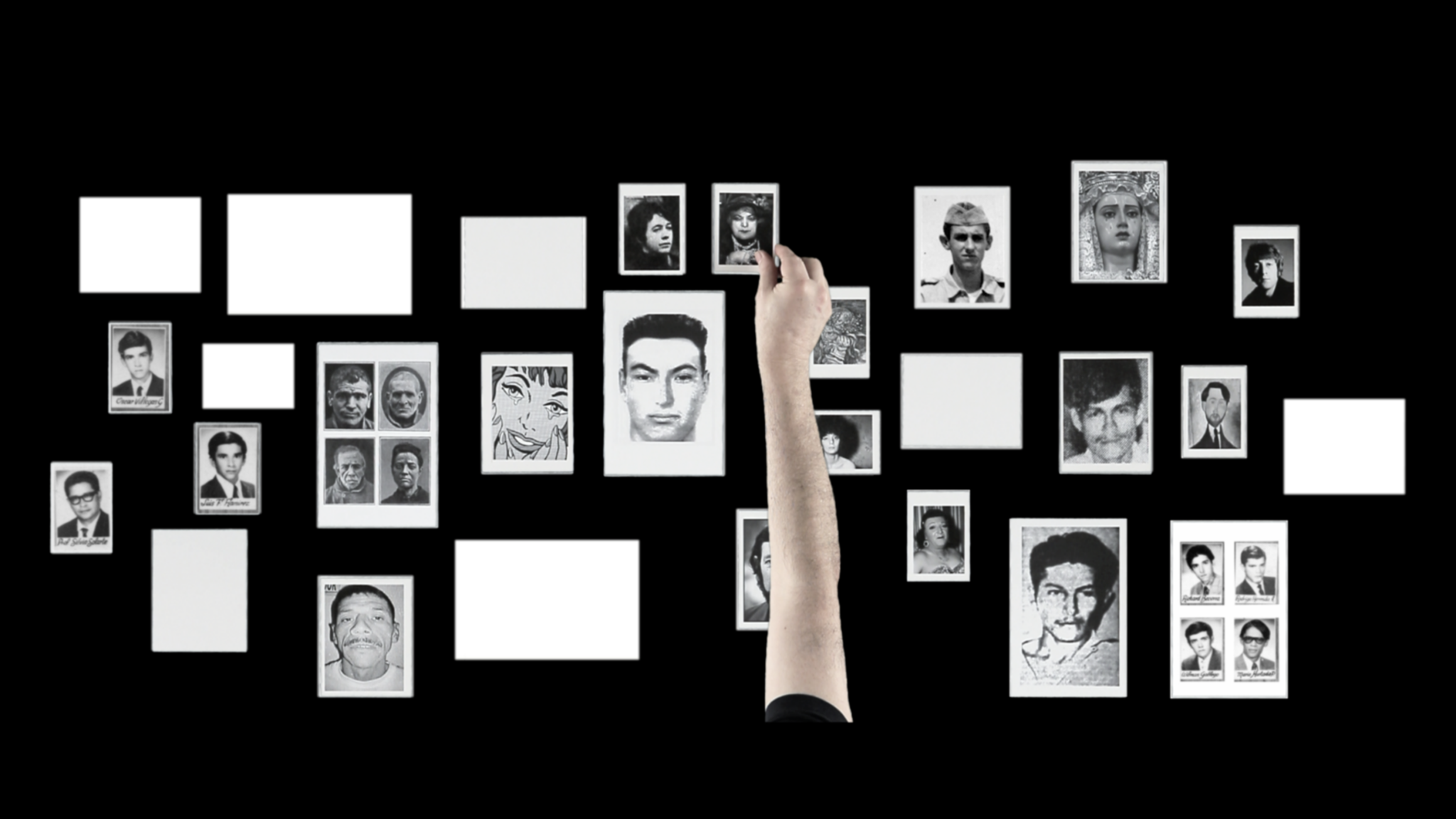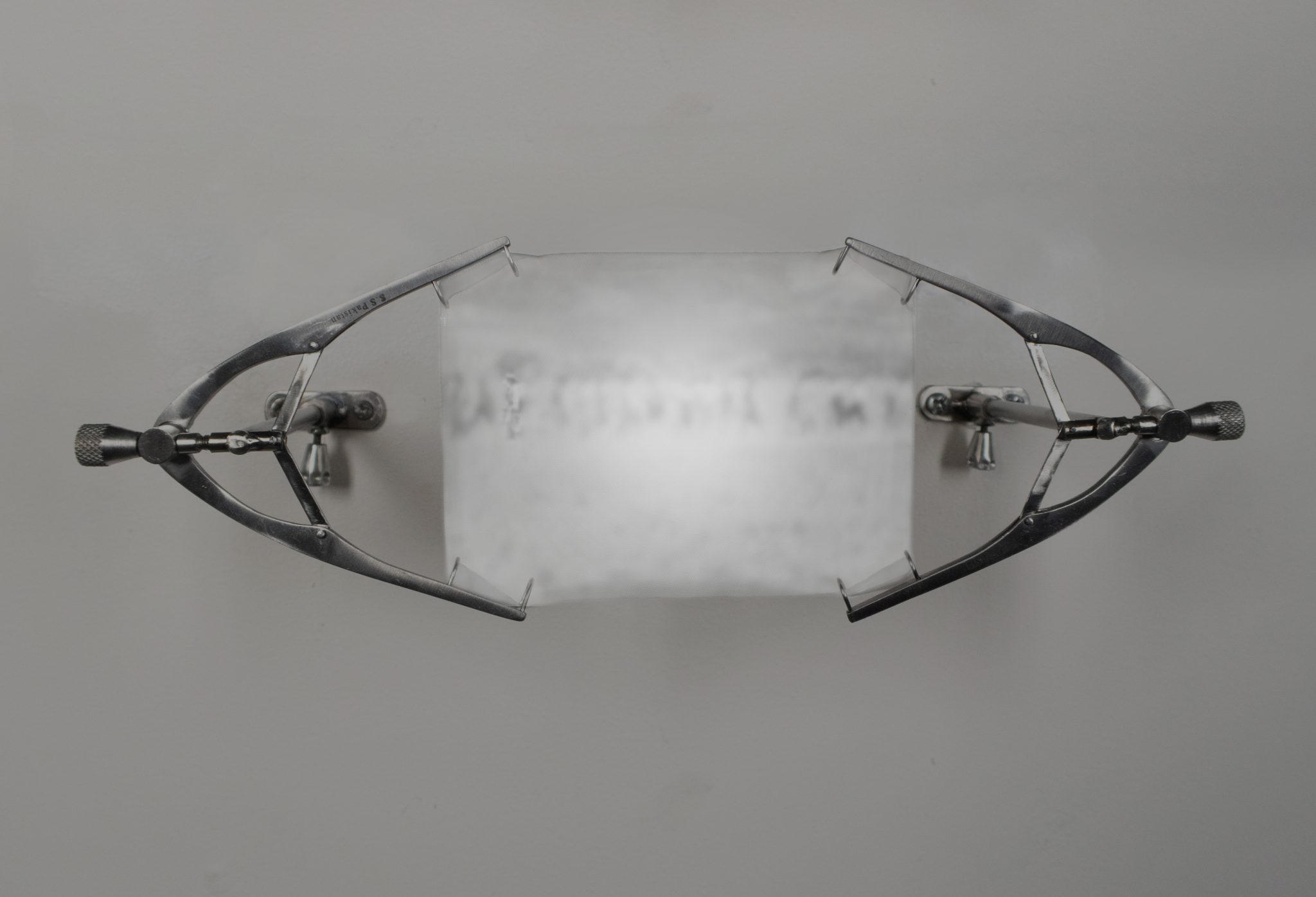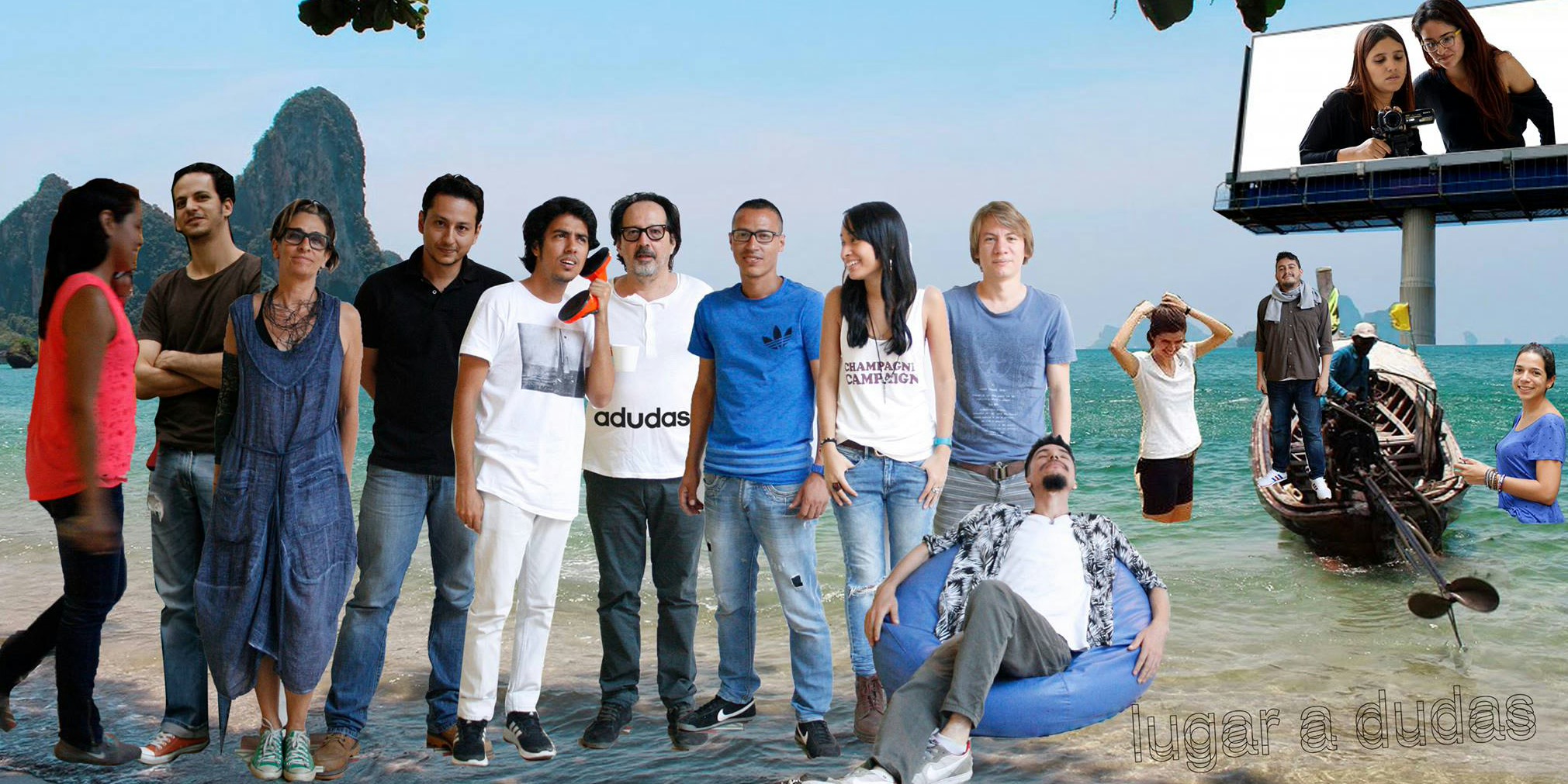
Oscar Muñoz: Chronology
Decades: 2010s-2020s
Decades
2010s
History
Security in Cali increases thanks to the capture of drug traffickers and a curfew for minors in some neighborhoods. However, the homicide rate continues to be among the highest in Colombia, in part because of limited investment in social development and security.1
Art/Culture
The collective art space Objeto–Workshops (Object-Workshops) is active in Cali. Its members, Breyner Huertas, Carlos Tamayo, and Hermann Yusty, focus on contemporary graphic arts.
2010
History
Social Party of National Unity candidate Juan Manuel Santos is elected President of Colombia until 2014. The Supreme Court has several ongoing cases against ex-president Uribe for his involvement in paramilitary massacres during the 1990s. The FARC (Revolutionary Armed Forces of Colombia) step up the level of violence.
The Artist
In June and July, the exhibition To Become Air, curated by Maria Iovino, presents Muñoz’s work as part of PHotoEspaña 2010 at the Circle of Fine Arts in Madrid.
2011
History
Most of Colombian cocaine is now controlled by BACRIM (Criminal Bands) and paramilitary groups. The FARC and other guerrilla groups continue to be financed by the drug trade. Homicides surge in Cali due to a mafia war between crime syndicates Los Rastrojos and the Usuaga Clan. The FARC release several hostages in an effort to reinitiate peace talks. The United States Congress approves a free trade agreement with Colombia.
Art/Culture
In September and November, Lugar a Dudas participates in the 8ª Mercosur Biennial, Porto Alegre, Brazil.
The Artist
Muñoz produces the video Clepsydra/Cyclops, focusing on images in constant flux. This video presents a basin filled with water that becomes increasingly dirty as images made with carbon dust are submerged and dissolve. His video installation Sedimentations shows the cyclic process of photographic portraits appearing and disappearing. One by one, single portraits on a white card are submerged in water in a basin, where the image dissolves and drains. Other blank cards are then submerged, and an image seems to appear and coalesce upon their surface. Editing turns the actions into an endless cycle.

Muñoz creates Solitary Editor, in which a video projected on a table shows images of people that are moved around by a hand as if it were a game of Solitaire played according to unknown rules. According to the artist, “Thinking about the hand which has the power to decide what will exist and what will not–in that sense, it is similar to the archivist. Nonetheless, it can also be seen from another angle that allows us to reflect on how the structures and management of power are designed. The character does not have a specific identity and he makes the decision to bring certain images up and remove others…. There are several images of people who have disappeared in Colombia, including one of those who vanished in relation to the violent takeover of the courthouse [Palace of Justice]. Even though that image is proof that he left the courthouse alive, it is not sufficient evidence that it happened because the document is frail, blurry, without many details. This image illustrates the debate between the opposing forces of the archivist’s job. It is a trace, unlikely evidence that this has been.”2
Muñoz makes the series Weak Impressions by silk-screening images of historically significant sites and pivotal characters in Colombian history with carbon dust on an acrylic support. By varying the distance between the printing mesh and the support, Muñoz arrives at a more nebulous or sharper image, altering the focus of the original. In the video Horizon, related to the Weak Impressions series, Muñoz includes vintage documentary film fragments shot in Tauramena, Colombia.3 Muñoz creates Open Book using toner on a book to show disappearing text.
José Roca and María Wills curate the retrospective Oscar Muñoz: Protografías, which is shown (until 2014) in the following venues: Museum of Art, Bank of the Republic, Bogotá; Jeu de Paume, Paris; Museum of Modern Art La Tertulia, Cali; Museum of Art of Lima; Museum of Antioquia, Medellín; Library Luis Ángel Arango, Bogotá; and the Museum of Latin American Art of Buenos Aires.
2012
History
The Colombian government and the FARC begin a fourth attempt at peace negotiations. Talks take place in Havana.
The Artist
Muñoz’s Ambulatory (Walking Place/Outpatient Ward), is shown in Belfast, Northern Ireland.

2013
History
In July, Cali hosts the IX World Games, featuring many competitions not included in the Olympic Games. The event signifies a return to the city’s long-standing interest in sports.
Art/Culture
The Cali art collective La Nocturna (The Nocturnal One) is founded by Hernán Barón, Herlyng Ferla, Éricka Florez, and Mónica Restrepo. They work by fostering projects at different local institutions, as a form of cultural infiltration. Muñoz participates in the exhibition Cantos/Cuentos Colombianos: Contemporary Colombian Art, organized by Casa Daros in Rio de Janeiro.
The Artist
Muñoz receives the Prince Claus Award from the Prince Claus Fund in Amsterdam, for his work with Lugar a Dudas. The award includes an exhibition of his work at the Prince Claus Fund Gallery, Amsterdam, in 2014. Muñoz works on Domestic until 2016, an installation in white marble that reflects on the memorializing role of photography. In the piece 4×3 (2013-17), Muñoz recycles the discarded edges of color passport photographs—rendered faceless—which he mounts in a geometric grid.
2014
History
Juan Manuel Santos serves a second term as President of Colombia, until 2018. In February, Cali hosts the Track Cycling World Championships, of the Union Cycliste Internationale, at the Velodrome Alcides Nieto Patiño.The Democratic Center, a right-wing political party, is founded by former President of Colombia Álvaro Uribe, former Vice President Francisco Santos Calderón, and former Minister of Finance OscarIván Zuluaga.
Art/Culture
The Cali art gallery bis | oficina de proyectos(bis | projects office), directed by Juan Sebastián Ramírez y Lina Rodríguez, opens, and supports contemporary artists until 2019.
The Artist
Muñoz produces Dystopia by taking pages from George Orwell’s book 1984, which were printed with black toner, and submerging them in water. The letters come off the surface of the paper making the text illegible. Similarly, in Palimpsest, text printed with black toner has drifted away on the page losing all semantic coherence. His show Biographies is exhibited in Albuquerque; Recife, Brazil; Haarlem, The Netherlands; Manchester, United Kingdom; Sydney; and Cartagena, Colombia.
2015
History
In July Cali hosts the IX World Youth Championship in Athletics at the Olympic Stadium Pascual Guerrero.
Art/Culture
Colombia is invited to participate in ARCOmadrid, the International Fair of Contemporary Art, as the honored guest country. The exhibition Oscar Muñoz: Black Liquid, curated by María Wills, is presented at La Tabacalera, Promoción del Arte, in conjunction with ARCOMadrid. Muñoz participates in the 10th Mercosul Biennial: Messages from a New America, Porto Alegre, Brazil; in the show Contingent Beauty: Contemporary Art from Latin America, at the Museum of Fine Arts, Houston; and in the exhibition Chamber of Marvels, Center of the Image, Mexico City. In March, the gallery Arte Amerika opens in Cali, owned and directed by Roberto Kilby, and dedicated to local and international art. The space closes down after two years. After a decade, Lugar a Dudas has become a leading institution for the arts in Cali.
The Artist
The exhibition Oscar Muñoz: Sedimentations is presented at the Contemporary Art Museum, University of South Florida, Tampa. Muñoz receives the Aurora Award from the Aurora Picture Show, Houston.
2016
History
Cali experiences a great drop in the homicide rate until 2017. In November, the Santos administration signs a peace agreement with the FARC, witnessed by representatives from Cuba, Norway, Mexico, the European Union, and the United States. The treaty, ratified by the Colombian Congress, includes comprehensive rural development, political participation, an end to drug trafficking, and the creation of a truth commission. President Juan Manuel Santos is awarded the Nobel Peace Prize.
The Artist
Muñoz continues to explore the relationship between photography and memory in his wall installation Monument. This marble piece consists of a shelf supporting twenty-four picture frames. He begins to work on the installation The Exercise of Empathy, re-creating the workshop tables of two late artists from Cali, Ever Astudillo and Fernell Franco. The pieces are exhibited at La Tertulia Museum (formerly known as Museum of Modern Art La Tertulia). The exhibition Oscar Muñoz: The Collector is presented at the Sicardi Gallery, Houston.
2017
History
The Colombian government begins a Comprehensive System of Truth, Justice, Reparation and Non-Repetition, including the Special Jurisdiction for Peace (JEP) in order to investigate human rights violations during the Colombian civil war.
Art/Culture
In July and August, the artistic director of the art space Lugar a Dudas, Víctor Albarracín, initiates a six-week program called Uncertain School to support collective and experimental projects and hold critical discussions among diverse people. The program’s website states: “What the school offers is a series of conversations, a space for critical discussion and an opportunity to have six weeks in the beautiful city of Cali, the world capital of Tropical Goth, to rest, cleanse, think, talk, and get in touch with people from different backgrounds, interests and passions.”4
2018
History
Ivan Duque Márquez, a member of the right-wing party Democratic Center, is elected President of Colombia until 2022. He campaigned in opposition to the peace treaty with the FARC. Under his administration, several former FARC members, union leaders, and environmentalists have been assassinated. Duque Márquez has resumed military operations against the ELN (National Liberation Army). FARC dissidents who did not accept the treaty continue to attack military forces. But in legislative elections, FARC candidates who joined the Democratic Center, win substantial representation.
The Artist
Muñoz receives the prestigious Hasselblad Foundation International Award in Photography. The award includes a symposium, an exhibition at the Hasselblad Center in the Göteborg Museum of Art in Sweden in 2019, and the publication of a book about his life and art. He produces his series Marginal, working again with discarded edges of passport photographs. In this piece, these edges are reassembled, photographed, enlarged, and printed. The colorful borders around the blank centers give no discernible clues to the person’s identity.

2019
History
In September, President Duque Márquez launches a new military attack against the dissident FARC, unraveling the 2016 peace treaty. The president meets with the Regional Indigenous Council of Cauca, an organization representing Indigenous communities that demand the Colombian government fulfill previous promises made regarding their livelihood and territory. More than one million Venezuelans migrate to Colombia as a result of the political crisis in that country. Worker strikes oppose Duque Márquez’s economic policies.
Art/Culture
In November, Oscar Muñoz. The Last Picture Show: Marginary is presented at the gallery bis | oficina de proyectos, Cali, as the closing show for this art space.
The Artist
For creating Lugar a Dudas, Muñoz receives the Montblanc de la Culture Arts Patronage Award, given by the Montblanc Kulturstiftung, based in Hamburg, Germany. Muñoz produces Open Book, a portfolio comprising a set of three, two-plate photogravures printed on both sides of the paper. He begins to work on a series of mini-projections entitled Ludovico’s Method. They consist of a projector set on a wall, with a small screen held up in front of it by the dual arms of an ocular speculum. The piece alludes to the fictional aversion treatment to combat violence in Stanley Kubrick’s A Clockwork Orange. This series is exhibited at the Carlier-Gebauer gallery in Berlin, along with other mini-projections called Trials, because they return to preliminary studies and recordings produced for works such as Biographies, Project for a Memorial, and Narcissus. He works on Atlas Light, an installation involving six tables with books and charcoal dust.

2020s
History
In March, Colombia enters into a period of quarantine and lockdown during the Covid-19 pandemic. There is a surge of violence, with more than thirty massacres taking place. Criminal gangs engage in violent confrontations for control of territory and the drug trade. In September, thousands protest police brutality in Bogotá, leaving eight people dead and more than 400 injured. Dozens of police stations are burnt or vandalized.5
Art/Culture
The Museum of Modern Art of Bogotá issues a call to Colombian artists to produce artworks during the Covid-19 pandemic. These will be displayed in a large exhibition once the museum reopens. The project also involves the newspaper El Tiempo, which will reproduce the artworks full page so the public can have the copies signed by the artists.
The Artist
After March, Muñoz remains in quarantine in his studio and produces the video Signs of Life (working title) and the photographic series Judgment Day.
Footnotes
1 Alexander Castillo Garcés and Ana María Betancourt Ledezma, “Violencia y políticas de seguridad en la ciudad de Cali–Colombia,” Summa Iuris, vol. 5, no. 2, July–December, 2017: 303. Digital Object Identifier (DOI): <https://doi.org/10.21501/23394536.2598>.
2 Muñoz, cited in María Ines Sicardi and Ximena Gama, “Sleight-of-hand: Oscar Muñoz with María Ines Sicardi and Ximena Gama on his recent installation Editor Solitario,” Spot, Spring 2013: 36–38.
3 María Wills, “Entrevista retrospectiva a Oscar Muñoz,” banrepcultural.org <https://www.banrepcultural.org/oscar-munoz/entrevista-memorias-infancia-juventud.html>, accessed January 28, 2020.
4 Escuela incierta, <https://www.escuelaincierta.org/about-1>, accessed May 1, 2020.
5 Julie Turkewitz, “Violent Protests Erupt in Colombia After a Man Dies in Police Custody,” The New York Times (digital edition), September 10, 2020; updated September 15, 2020; accessed September 16, 2020.

